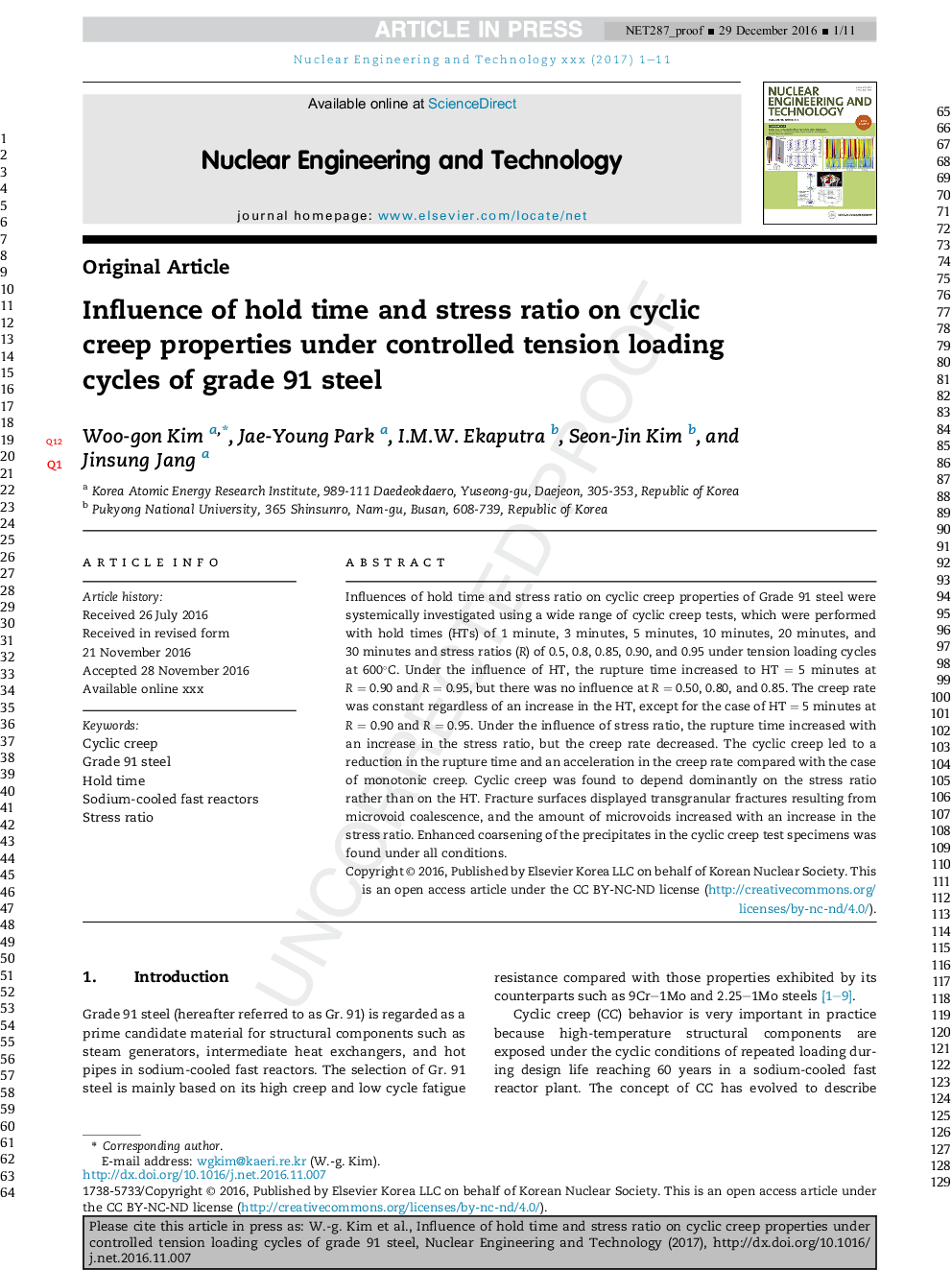| Article ID | Journal | Published Year | Pages | File Type |
|---|---|---|---|---|
| 5477832 | Nuclear Engineering and Technology | 2017 | 11 Pages |
Abstract
Influences of hold time and stress ratio on cyclic creep properties of Grade 91 steel were systemically investigated using a wide range of cyclic creep tests, which were performed with hold times (HTs) of 1 minute, 3 minutes, 5 minutes, 10 minutes, 20 minutes, and 30 minutes and stress ratios (R) of 0.5, 0.8, 0.85, 0.90, and 0.95 under tension loading cycles at 600°C. Under the influence of HT, the rupture time increased to HT = 5 minutes at R = 0.90 and R = 0.95, but there was no influence at R = 0.50, 0.80, and 0.85. The creep rate was constant regardless of an increase in the HT, except for the case of HT = 5 minutes at R = 0.90 and R = 0.95. Under the influence of stress ratio, the rupture time increased with an increase in the stress ratio, but the creep rate decreased. The cyclic creep led to a reduction in the rupture time and an acceleration in the creep rate compared with the case of monotonic creep. Cyclic creep was found to depend dominantly on the stress ratio rather than on the HT. Fracture surfaces displayed transgranular fractures resulting from microvoid coalescence, and the amount of microvoids increased with an increase in the stress ratio. Enhanced coarsening of the precipitates in the cyclic creep test specimens was found under all conditions.
Related Topics
Physical Sciences and Engineering
Energy
Nuclear Energy and Engineering
Authors
Woo-Gon Kim, Jae-Young Park, I Made Wicaksana Ekaputra, Seon-Jin Kim, Jinsung Jang,
